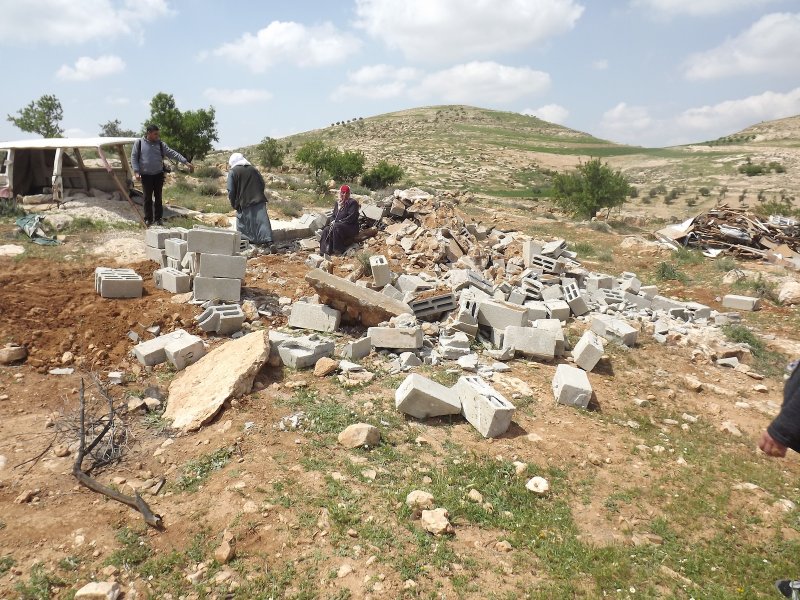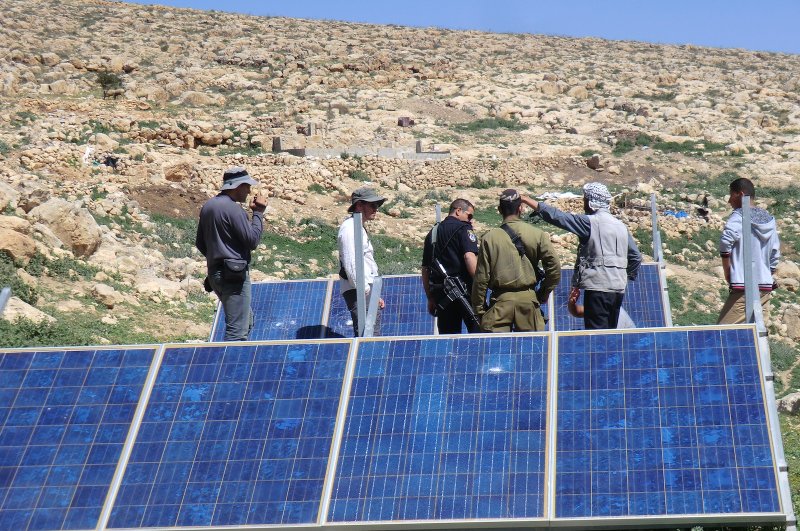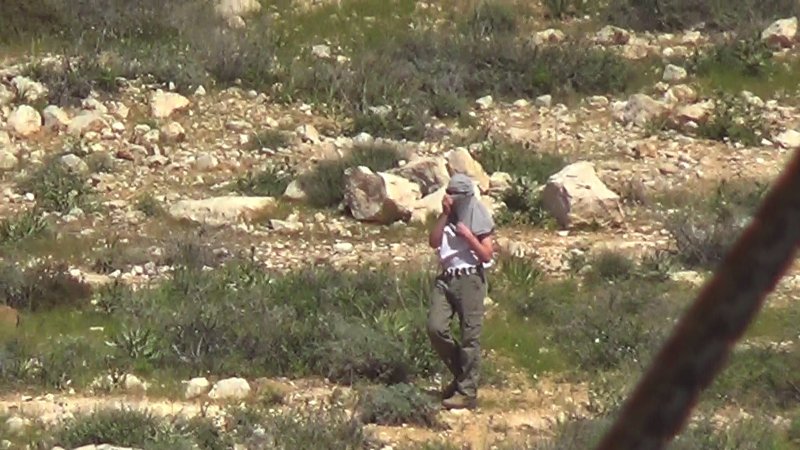Tag: South Hebron Hills
-
Six shelters demolished by the Israeli forces in the Palestinian village of At Tuwani
3rd April 2014 | Operation Dove | At-Tuwani, Occupied Palestine On April 2 the Israeli army together with some Border Police and District Coordination Office (DCO) officers demolished six shelters made of concrete in the Palestinian village of At-Tuwani. At 9:20 am a convoy made up of one bulldozer, two army Jeeps, three Border Police vehicles, and…
-
Palestinian basic resources damaged by Israeli settlers
29th March 2014 | Operation Dove | At Tuwani, Occupied Palestine In the evening of March 26, Israeli settlers damaged some solar panels, only electricity power sources for the Palestinian village Bir Al Idd. The same day, during the early afternoon, Israeli settlers grazed their flock on Palestinian-owned wheat fields, damaging the harvest. At 2.18…
-
Settlers from Havat Ma’on attacked Palestinian shepherds in two different places at the same time, in the South Hebron Hills
22nd March 2014 | International Solidarity Movement, Nablus Team | Bruqin, Occupied Palestine On March 20, four settlers from Havat Ma’on illegal outpost attacked, in two different places at the same time, two internationals and seven Palestinian shepherds while grazing flocks on their own land. The settlers were armed with a gun and slingshots. At…



